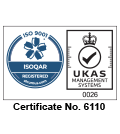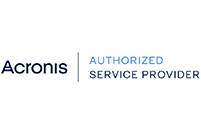Life in the classroom is changing, and children are increasingly using their knowledge of computers and handheld gadgets to put this experience into practice while at school. Gone are the days of sitting at a desk and working on tasks alone, the age of collaborative learning is officially upon us - and schools are increasingly looking to incorporate technology into the everyday lives of children, of course, within the constraints of ever-dwindling budgets.
This year looks set to be another big year concerning IT in schools, as 3D printing, the Internet of Things and virtual reality continue to add new dimensions to learning. But as an increasing number of devices are brought into schools, it is absolutely essential for teachers and staff to remember a few important lessons to ensure children can use them safely.
We’ve given you the lowdown below.
Safeguarding students
Children in the modern era are incredibly tech savvy, and it’s likely the majority of them will have been using smartphones and other gadgets from an early age. However, this does not mean that education providers can scrimp on security, and it’s more important than ever to ensure that children can browse the internet safely.
By law, schools are required to have firewalls in place that block potentially harmful content from filtering its way into IT networks. What’s more, in 2015, schools rolled out the Prevent Duty, which aims to prevent young individuals from being drawn into terrorism - and the regulations demand that appropriate filtering is in place to keep children safe from extremist material.
SonicWall is an ideal tech solution for any school looking to safeguard its students against harmful online content. This innovative range of products provides network security and content control, meaning teachers can spend more time on what matters and schools can rest assured children are protected.
Streamline your systems
Schools placing onus on the use of technology in the classroom should take time to streamline their systems for ease of use. This is beneficial for a number of reasons. Firstly, having streamlined technology means schools need only deal with a single supplier, which means there’s only one number to ring if something goes wrong. On top of this, a series of devices from the same manufacturer are likely to work better together than those from a number of different brands, this ease of use will make it easier for pupils to switch between machines from lesson to lesson.
What’s more, using applications, such as Google Docs, will allow for collaboration in the classroom, allowing pupils to add to and edit documents from a number of different devices, while events and calendar invites can be set up to appear across many different systems.
There is no denying that educators have an awful lot to think about, and as the power of technology continues to grow, schools will need to adapt their strategies to allow for the increasing role of technology in learning. However, with a little bit of knowhow, this needn’t be too difficult, simply ensure you take steps to safeguards any existing systems (as well as any new products brought in) and link up devices to allow for a stress free, collaborative approach.







